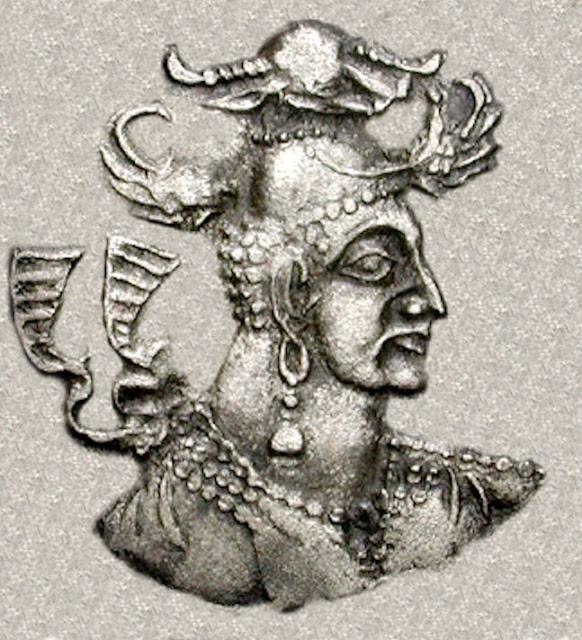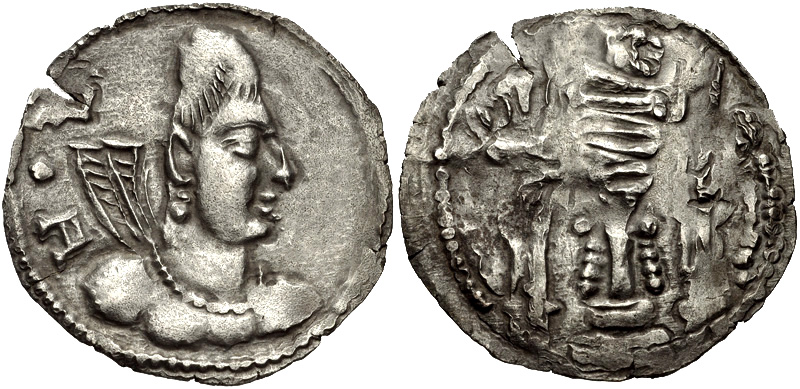Unknown ruler of Chach, in Hephthalite (White Hun) fashion 7th-8th C. CE
"It is uncertain whether Hephthalites, Kidarites, and Chionites had a common or different origin – that is, are they three branches of the same ethnic group or are they culturally, linguistically, or genetically distinct from one another? This is explained by the fact that the written sources referring to that period are very scanty and fragmentary in nature. The archaeological material is also very limited and the dating is often approximate and inexact. The numismatic discoveries in some measure reveal interesting aspects of the history, particularly about monetary circulation. But, in spite of the aforesaid, the collection of available facts allows reconstruction of a more or less clear picture of the political and socio-economic life of that region. This is primarily due to the limited number of sources, which are sometimes too contradictory to be harmonized. The literary evidence is not decisive, since reports by the Chinese pilgrims and records by Indian authors are at times ambiguous; and the statements of the Roman and Greek historians, who hardly knew how to deal with the various Hunnic people of the remote eastern lands, are vague. In the absence of authentic evidence, the coins issued by the leaders of those people constitute one of the most reliable primary sources for the history of the Hephthalites."
-The Hephthalites: Iconographical Materials by Aydogdy Kurbanov
 |
| Chach "tamga". |
Source/Quote:



Comments
Post a Comment